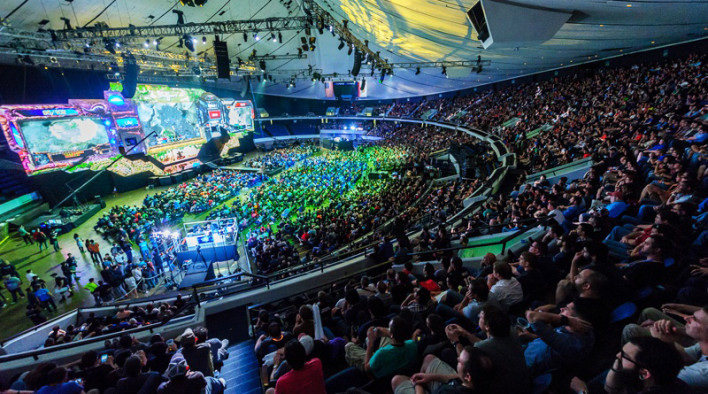
Esports fans have put up with a lot down the years, from stigma to slights and everything in between. According to the same people who believe everyone could afford a house if they didn’t pay for Netflix or eat avocado, us esports folk live in our parents’ basements, never wash, and survive on a diet of Mountain Dew, Doritos and anime.
My colleagues’ questionable viewing habits aside, it turns out these are some extremely outdated and potentially misleading stats, at least according to the experts employed by information specialists Newzoo. It may in fact be the case that esports is the pastime of the "elite", with the average fan of Counter-Strike or League of Legends being above average in terms of income and employment.
"Esports enthusiasts represent an attractive segment for consumer brands; 74% of esports enthusiasts are full-time employees (compared to just 56% of the general online population), and around 44% fall in the high-income bracket (compared to 33% of the general online population)," Newzoo says. The agency claims that esports fans are nearly 20% more likely to be full-time employees than the average person, and there are also an above-average number of high-income fans in esports compared to the general public.
Why esports fans are better
Some of the reasons for the disparity are fairly simple to work out. The esports audience is skewed towards young and technologically literate in a way many older generations are not. This will also explain a degree of the earning power esports fans have, with a larger than average number of people involved in the tech sector, which can be extremely lucrative.
It’s also true that the gaming and esports audience is still growing, while many traditional sports are struggling to retain fans, let alone gain new ones. 921M people are following the scene in 2022 and Newzoo estimates that we'll cross the 1B fan mark come 2023. The agency adds that COVID had actually accelerated the growth of the audience and that we’d be at 1.4B in 2025 if all goes to their projections.

Esports revenue continues to grow in the billions
It’s similarly good news with revenue in mind too, as 2022 will see global revenue go from $1.1B to $1.38B, and Newzoo claiming the number could be $1.86B by 2025. This figure, when set alongside the fan numbers, does demonstrate the one major problem esports still has: adequately monetizing the people who watch the games and turning consumers into customers.
For reference, sports fans are estimated to spend hundreds of dollars a year following their game of choice, with a 2018 study putting the average annual spend at $566. If esports could monetise fans this effectively, the scene would be staggeringly wealthier, but equally it may well be that new fans wouldn’t be flocking in if the cost of entry was higher than it currently is.
One thing we can be sure of though, is that when it comes to fans, esports supporters are able to flex their status in a way few would ever have predicted, with their employability and financial success. From the pastime of the unemployable, esports has grown into the mainstream in a way few could have predicted, and now it seems like we’re starting to pull ahead.
Sort by:
Comments :0






